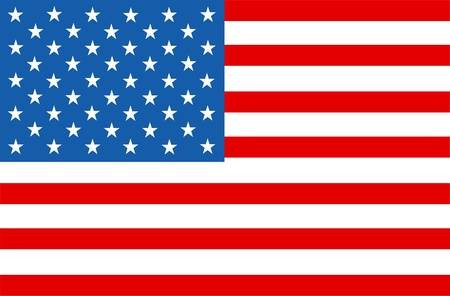SXSW: A Fusion of Tech, Culture, and the People Driving it Forward
By: Elayna Tekle
The SXSW conference feels like you’ve entered another world built on imagination and innovation. I was inspired, overstimulated, and the vibes were immaculate.
Over 300,000 participants consumed content across 24 programming tracks for nine days, fueled by the buzzing energy of creatives, innovators, and the brightest talent.
AI was everywhere, highlighting current capabilities and real-world application challenges. Although DEI wasn’t a track, it was brought up in almost every panel.
Key themes driving innovation and success were bravery, human connection, and inter-industry connection. These were especially noticeable for healthcare, an industry where the benefits of tech and innovation are abundant.
Bravery drives results
The conference’s exhibitors and panelists demonstrated bravery, challenging the status quo and are seeing results.
During the panel “Why Investing in Women’s Sports is a Win“, it was clear that investing in diversity is the right thing to do and is good for business. Women’s sports fans are younger, more educated and affluent than men’s sports fans. Female athletes drive 2x the engagement on social and fans are 45% more willing to consider or purchase from sponsor brands (compared to fans of men’s sports)1. Despite these stats, women’s sports business is still a tiny fraction of men’s ($1B vs. $500B). But it is growing (+300% in past 2 years), and the brands leaning in are seeing tangible results.
Jenny Nguyen opened the first sports bar 100% focused on women’s sports (The Sports Bra ), she needed to believe in the potential to make the bar a reality. And it has paid off, she brought in $1M revenue in the first 8 months. With Kara Nortman, co-founder of the Angel City Football Club, and Kate Veronneau, Director of Women’s Strategy at Zwift, they spoke about the unwavering strength needed to unpeel layers of possibility in women’s sports. For Kate, this meant pushing for women to race Tour de France for the first time in 30 years. Last year the women’s race reached 23M viewers, a higher audience share than the men’s.
Women’s sports are having a moment, but let’s not forget gaming. During the panel “Diversity of Gaming: What to Do to Get it Right” female BIPOCs discussed the gender rebalance and impacts to the white-male-dominated space. Nearly half of the 3B global gamers identify as women, yet they are rarely supported or amplified. The top female eSports players make 5% of what the top male counterparts make2 . Gaming is rapidly growing and projected to reach $282.3B in revenue this year, a 46% increase from 2020, much of which is coming from women and POCs3. Few companies are focused on them, but those that do are seeing success. Game studios led by women outperform their male counterparts in engagement and attracting new users. Women also drive more engagement and conversation in gaming communities online.4
Diversity and inclusion aren’t just buzzwords to make companies look good, there is untapped potential to win with these audiences and transform business performance.
At OMD, the clients developing brand strategies to win in these emerging spaces are seeing positive results such as increases in brand love, ROI, and revenue. Keeping a pulse on cultural signals and bravery are key to driving that performance.
Tech unlocks better connections
Tech has made monumental progress over the past few years. Rather than fear what it will take away from humans, look at how it can unlock better connection.
During a session on whether AI will replace healthcare workers, panelists discussed how AI is an asset that can unlock empathy. ~60% of medical professionals say they are burnt out and one-third of physicians’ time is spent documenting information. If AI can take on the burden of admin tasks, time can be freed up to focus on human-to-human care, the most essential part of healthcare.
Mental health and loneliness are on the rise, disproportionality impacting youth and seniors. During “Building empathy with VR” panelists highlighted the platform Innerworld, a virtual peer-to-peer mental health community that has helped people across generations. Tech is increasing accessibility, enabling connection, while allowing users to maintain anonymity.
In the gaming tracks, the experiences that have seen the most success are those built with connectedness in mind. Roblox has 216M users, 71M play daily and spend 156min/day on the platform! That’s an astronomical amount of time spent in a virtual space and it’s due to the connective nature of the experience.
Across industries tech is enabling innovation but humans are powering the change.
Inter-industry connection
It was hard not to notice interconnectedness across programming tracks.
Gaming was brought up in health panels, fashion was a component of music, music and gaming were intertwined, and health was a critical part of sports talks. Tech and data can be complementary across industries, and humans don’t live or consume content in silos.
Interactive gaming experiences like Fortnite have unlocked access to fans for emerging music artists. Professional and everyday athletes are monitoring not just physical performance but mental health and nutrition as part of training. Headspace XR launched with Meta Quest during the conference, bringing gamification to healthcare.
Panelists credited cross-industry collaboration for helping propel brands in a complicated, tech-forward world. A willingness to learn and collaborate with other industries will continue to help brands get ahead.
Tech innovation and adoption is crucial to the future of healthcare
The healthcare system in expensive, complicated, and overwhelmed, but tech can help.
With growing aging populations and physician burnout, a reliance on technology for early detection is a necessity so as not to overwhelm health systems. The new tech is promising. In “The Critical Path Forward for Affordable Accessible Health,” Vin Gupta spoke of non-invasive solutions that leverage immune system indicators to predict disease. These type of tests diagnose people early and determine which patients need more invasive care. There are not enough people to handle the care that will be needed if we don’t take advantage of preventative solutions and focus on early detection of disease.
Across various panels, AI was highlighted as a tool to save time, provide better training and promote equity in healthcare. Vin showcased the AI-powered platform Glass AI 2.0 (beta), which assists doctors in diagnoses and administrative tasks. It is currently live, and doctors using it have more time for patient care.
Patient-empowered care is another shift we’re seeing. Younger consumers especially view their health holistically, paying attention to mental and physical health. Across generations there is a rise in health tracking adoption (40%), and wearables (35%)5. Consumers are taking control and are willing to leverage tech to help.
Tech advances free up time to focus on what really matters, bringing more humanity into healthcare. The brands that will see the most success are those focused on prevention and leveraging tech to unburden health workers and empower consumers.
Applying lessons learned from SXSW to our work
- Look for culture signals early and be brave
- Unlearn and look to cultural signals for new territories to play in. Have a strategy to reach diverse audiences and make sure diverse perspectives are part of the conversation.
- Don’t fear AI, leverage it to unlock better connections
- AI can analyze data and take over mundane tasks. Focus on training teams to leverage AI and unlock more time for critical thinking and connection.
- Lean into inter-industry learnings and partnerships
- Tech is impacting industries in similar ways, look beyond competitive sets for inspiration and advice. A willingness to learn will deliver better results.
- Tech adoption is crucial to the future of healthcare
- Tech is rapidly changing healthcare, arming professionals with early insights and empowering consumers. Early insights on disease state with save time and money.
Reporter:

Elayna Tekle
Executive Director, Communications Planning, OMD U.S.
